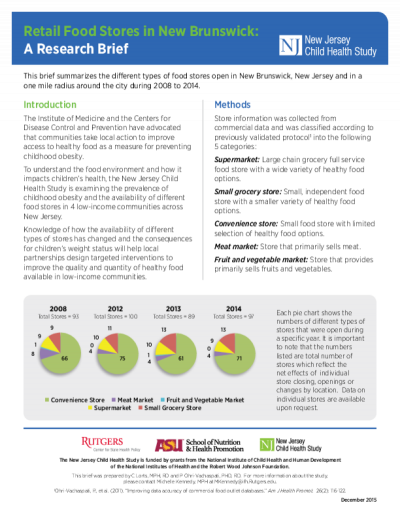

Objective: Women, Infants, and Children (WIC) cash value vouchers (CVV) have been inconsistently redeemed in Arizona. The objective of this study was to explore perceived barriers to use of CVV as well as strategies participants use to overcome them.
Design: Eight focus groups were conducted to explore attitudes and behaviors related to CVV use.
Setting: Focus groups were conducted at 2 WIC clinics in metro-Phoenix, AZ.
Participants: Participants in WIC who were at least 18 years of age and primarily responsible for buying and preparing food for their households.
Phenomenon of interest: Perceived barriers to CVV use and strategies used to maximize their purchasing value.
Analysis: Transcripts were analyzed using a general inductive approach to identify emergent themes.
Results: Among 41 participants, multiple perceived barriers emerged, such as negative interactions in stores or confusion over WIC rules. Among experienced shoppers, WIC strategies also emerged to deal with barriers and maximize CVV value, including strategic choice of times and locations at which to shop and use of price-matching, rewards points, and other ways to increase purchasing power.
Conclusions and implications: Arizona WIC participants perceived barriers that limit easy redemption of CVV. Useful strategies were also identified that could be important to explore further to improve WIC CVV purchasing experiences.

In the face of the coronavirus (COVID-19) pandemic, food assistance programs adapted quickly and in unprecedented ways to meet the challenges of high unemployment, disruptions in the food supply, and school closures. Supported by US Department of Agriculture’s COVID-19 program-specific waivers, some programs relaxed their eligibility criteria, while others improvised on delivery modalities or temporarily increased benefits.1 To examine food assistance program participation and participant experiences during the first few months of the pandemic, we collected online survey data in July 2020 from a sample of over 1,500 U.S. households, representative of the US population. This brief summarizes participation in key food assistance programs, namely, the Supplemental Nutrition Assistance Program (SNAP), the Special Supplemental Program for Women Infants and Children (WIC), School Food Programs, as well as emergency food assistance provided through Food Pantries.

Many factors influence children’s health behaviors and health outcomes. The Social Ecological Model (SEM) groups these factors into interactive layers, creating a framework for understanding their influence and for designing interventions to achieve positive change. The layers of influence in the SEM include individual, interpersonal, organizational, community, and policy factors.


This brief summarizes the different types of food stores open in New Brunswick, New Jersey and in a one mile radius around the city during 2008 to 2014.

Many factors influence children’s health behaviors and health outcomes. The Social Ecological Model (SEM) groups these factors into interactive layers, creating a framework for understanding their influence and for designing interventions to achieve positive change. The layers of influence in the SEM include individual, interpersonal, organizational, community, and policy factors (see figure). The New Jersey Child Health Study (NJCHS) was designed to examine how specific layers of the SEM, particularly food and physical activity environments in schools and communities, affect obesity outcomes in children

This brief summarizes the different types of food stores open in Camden, New Jersey and in a one mile radius around the city during 2008 to 2014.

This brief summarizes the different types of food stores open in Newark, New Jersey and in a one mile radius around the city during 2008 to 2014.

This brief summarizes the different types of food stores open in Trenton, New Jersey and in a one mile radius around the city during 2008 to 2014.